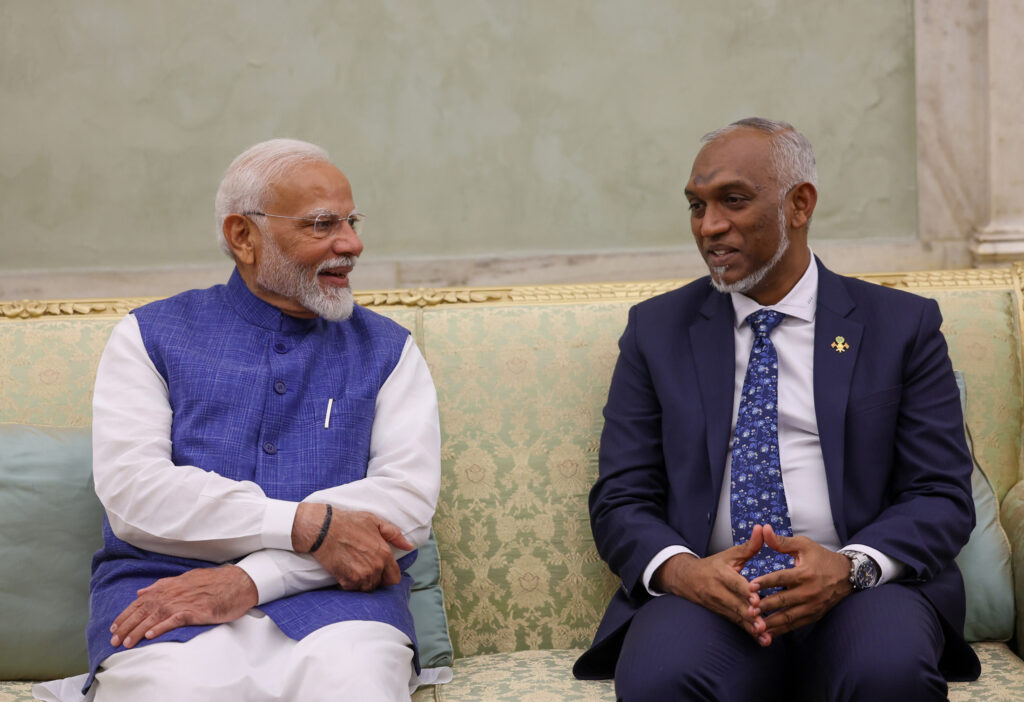
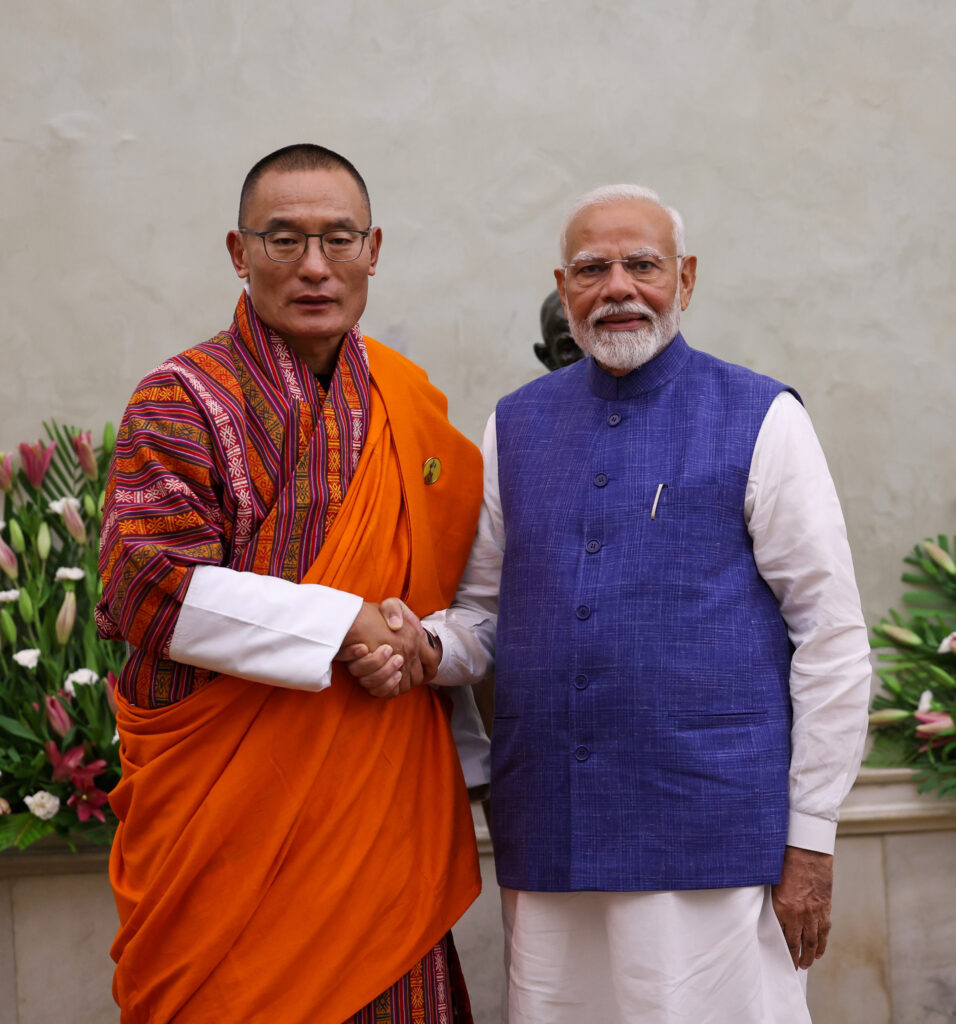
It is a little more than 10 years since Prime Minister
Narendra Modi took over as the head of the NDA government in May 2014. At that time, it was presumed that foreign policy would be Modi’s weakest suit in governance since he had no or little experience in dealing with foreign countries.
Ten years later, however, foreign policy has emerged as one of Prime Minister Modi’s biggest strengths. This is particularly commendable since India and the world have experienced challenges of a nature that the global community has not witnessed over several decades. One of the most debilitating of these was the Covid-19 pandemic which was a black swan event occurring after a gap of 100
Notwithstanding several challenges, Modi was ably assisted by the late Sushma
Swaraj, then External Affairs Minister, and now the current incumbent, Dr S. Jaishankar
years. Before the world could come to grips with the aftermath of the pandemic, it was struck in quick succession with two unanticipated conflicts: the Russia-Ukraine war and the Israel-Hamas confrontation. Some other unsettling
developments during this period included the increasingly aggressive behaviour of China in the East China Sea against
Japan and Taiwan, in the South China Sea against several ASEAN (Association of South-East Asian Nations) countries, and against India and Bhutan on the undemarcated and disputed land boundary between China and these
countries.
Notwithstanding these and several other challenges on
the domestic and international fronts, Modi, ably assisted by the late Sushma Swaraj, then External Affairs Minister,
and the current incumbent, Dr S. Jaishankar, and by virtue
of his bold, visionary and firm leadership, raised the image and profile of India as a partner of choice, a voice of reason and a consensus builder in the world.
India’s Economic Growth
The foreign policy pursued by Prime Minister Modi’s government over the past 10 years has been a remarkable success. This has been possible in large measure due to the rapid growth registered by the Indian economy over this period. From being one of the “fragile five” and the 11th
largest economy in the world, India is today the fifth largest economy, well on its way to becoming the third largest economy over the next few years. It is the fastest growing major economy in the world with a GDP growth of 8.2% in
the last fiscal year. Its contribution to global growth has increased significantly and, according to the Managing Director of the International Monetary Fund, it has emerged as a ray of hope in an otherwise gloomy scenario for the global economy. Its enhanced GDP has significantly expanded India’s capacity to play a more significant and active role in global affairs.
One of the first initiatives launched by Prime Minister Modi after coming to power was the ‘neighbourhood first’
policy when he invited heads of state/government of all
SAARC (South Asian Association for Regional
Cooperation) countries and Mauritius, to his swearing-in ceremony on May 26, 2014. Five years later, he invited leaders of BIMSTEC (Bay of Bengal Initiative for Multi-Sectoral Technical and Economic Cooperation), Kyrgyzstan (in its capacity as President of the Shanghai Cooperation Organisation (SCO)), and Mauritius to his second oath-taking ceremony on May 31, 2019. For the third consecutive swearing-in, PM Modi invited the leaders of Bangladesh, Sri Lanka, the Maldives, Bhutan, Nepal,
Mauritius, and Seychelles on June 9, 2024. The guest list was guided by India’s ‘neighbourhood first’ as well as the SAGAR (Security and Growth for All in the Region) poli
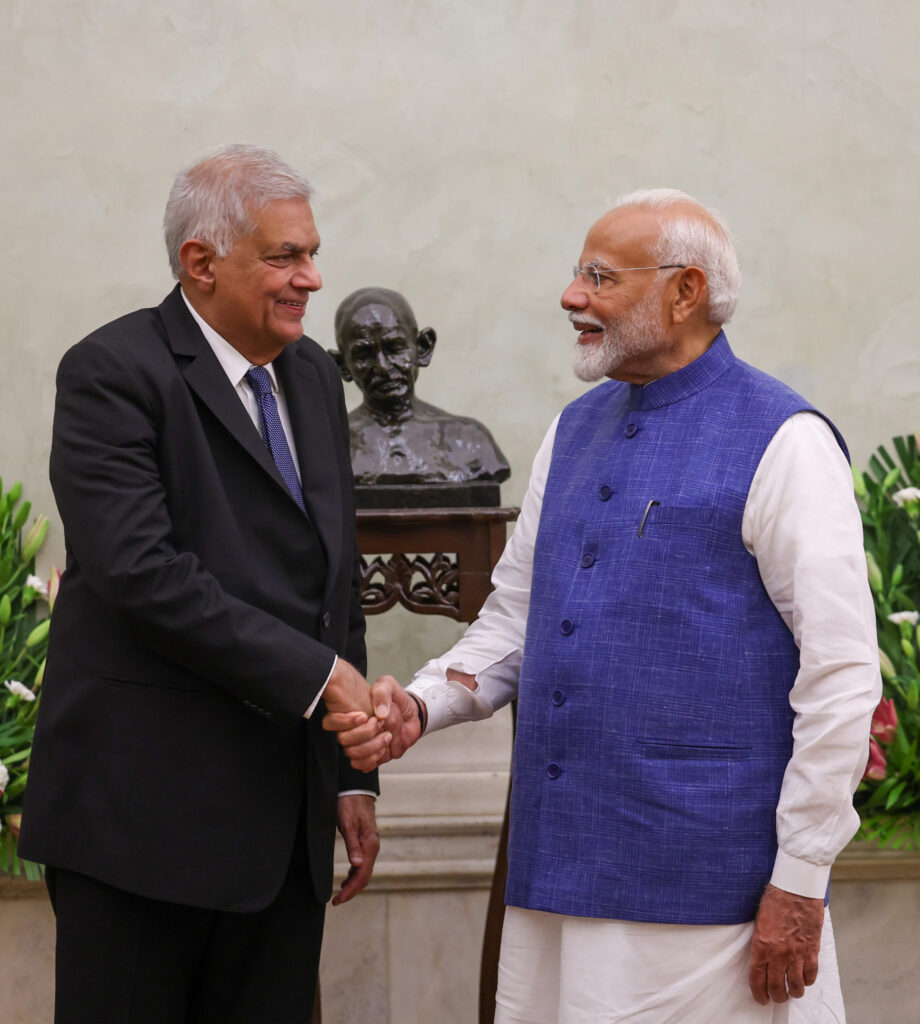
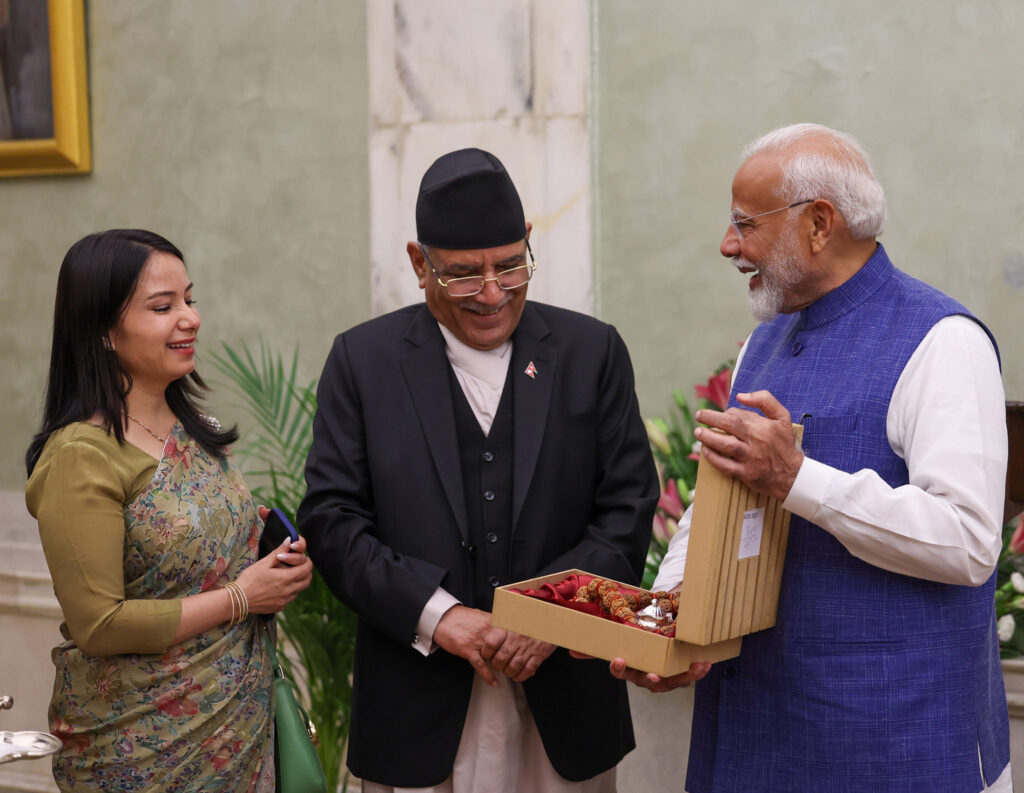
cies, which focus on key island nations in the Indian Ocean region. The invitation to the leaders of these countries sent out a strong message that India will stay committed to its ‘neighbourhood first’ policy which was enunciated way
back in 2014. The success of the policy is evident from the fact that India’s ties with its neighbours (barring Pakistan, China and, more recently, Bangladesh) are much stronger and deeper today than in 2014.
Prime Minister Modi’s first visit to Nepal in August
2014 was the first bilateral travel by an Indian prime minister to Nepal in 17 years. Since then, Prime Minister Modi has travelled four more times to Nepal, viz., in November 2014 for the SAARC Summit; twice in 2018, once on a bilateral visit and once for the BIMSTEC Summit; and the
fourth time in 2022 on a visit to Lumbini at the invitation of the Nepalese prime minister. The meeting of the Joint Economic Commission between India and Nepal in September 2014 took place after a hiatus of 23 years. All
these visits as well as interactions with Nepalese leaders on their visits to India have significantly enhanced understanding and cooperation between the two countries.
Similarly, the unanimous ratification of the long-pending Land Boundary Agreement with Bangladesh
(Indira-Mujib Accord, signed in 1975) sent a strong
message that India is keen to strengthen its bilateral ties with Bangladesh, its important eastern neighbour. Relations with Bangladesh, however, hit a road block inAugust 2024 after the long-ruling Prime Minister Sheikh Hasina was suddenly ousted by a violent movement, which in diplomatic circles is being seen to have been engineered and meticulously planned by foreign hostile forces.
Bilateral relations have spiralled downwards since,
because of the insensitivity of the caretaker administration
led by Prof. Mohd Yunus to India’s concerns around security and mounting attacks on Hindus and other minorities in Bangladesh. It is, however, expected that on account of
the deep economic and political interdependence between
the two countries, realisation will soon dawn upon the dispensation in Dhaka to not adopt a stridently anti-India
stance in its domestic and foreign policy but to respond
positively to India’s gestures to maintain peaceful and positive bilateral ties.
With Sri Lanka also, the first visit by Prime Minister
Modi in March 2015 was the first bilateral visit by an Indian
prime minister after a long gap of 28 years. The decisive
and emphatic political and economic support by India to
Sri Lanka in its hour of crisis and need in 2022 by providing
$4.5 billion for meeting urgent and essential needs, significantly enhanced confidence in the bilateral partnership
and took it to new heights.
The invitation to President Muizzu for
Modi’s swearing-in came as something of
a surprise because of his behaviour during
the Maldivian presidential election
Relations with the Maldives hit rock-bottom when the
new President, Mohd Muizzu, came to power in November
2023 on an “India Out’’ campaign. He demanded the
immediate repatriation of about 80 Indian military personnel stationed in the Maldives to operate the helicopters
donated by India for medical relief services. Like one of his
predecessors, Mohd Yameen, he sought at the beginning of
his term to take his country closer to China, Turkey and
some Islamic nations.
However, reality soon registered regarding the
Maldives’ huge dependence on India and, after two visits to
India — for the swearing-in of PM Modi in June 2024, and
a state visit in October 2024 — things have started looking
up. The invitation to President Muizzu for Modi’s swearing-in this year came as something of a surprise because of
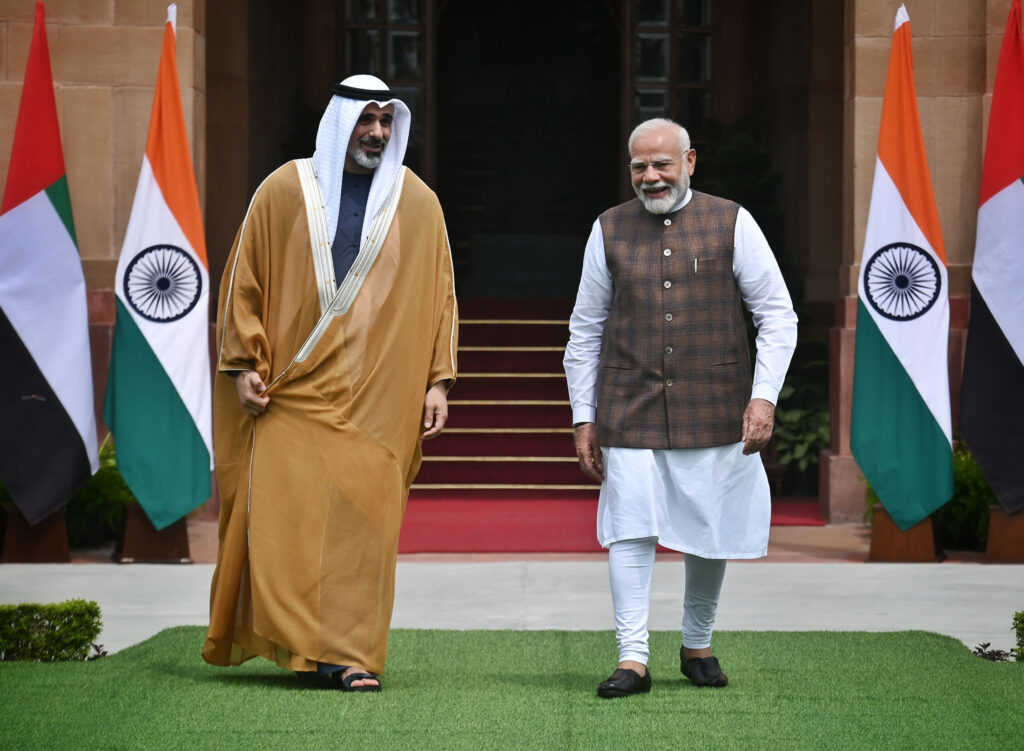
Modi has struck up a personal rapport with Sheikh Khaled bin Mohamed bin Zayed Al Nahyan, Crown Prince of Abu Dhabi
The decline in ties with Pakistan and China
is not on account of any failure or missteps
by India but due to actions taken by these
countries for political or strategic reasons
his behaviour during the Maldivian presidential election campaign and immediately thereafter. The invitation sent out a clear message that India, as the much larger and more powerful country, is willing to be magnanimous in dealing with
its smaller neighbours. This initiative was taken forward
through the five-day state visit by the Maldivian President to India over October 6-10. During his visit, President Muizzu
categorically stated that the Maldives would never do anything to undermine the security of India — who it viewed as a “valued partner and friend”. He added that cooperation in several fields, including defence, will “always be a priority.” Muizzu profusely thanked PM Modi and India “for the generous assistance and cooperation extended to the Maldives over the years, including the recent budgetary support in the
form of rollover of T-Bills” as well as “support in the form of �30 billion, in addition to $400 million bilateral currency swap agreement.”
PM Modi invited the leaders of the Seychelles and Mauritius to his swearing-in ceremony on account of India’s
growing interest in maintaining peace, security and stability
in the Indo-Pacific region, particularly the Indian Ocean.
This was necessitated by the growing presence of China in the Indian Ocean — indicated by the increasing movement of
Chinese ships in the region and a permanent Chinese presence in several ports like Djibouti, Gwadar, Hambantota, Kyaukphyu (in Myanmar) and, possibly, in the Maldives in the coming years.
The decline in ties with Pakistan and China is not on
account of any failure or missteps by India but due to actions taken by these countries for domestic political or strategic reasons. India has responded firmly to terrorist attacks from
Pakistan with Islamabad being categorically told that terrorism and talks cannot go together. Through the surgical strike in September 2016 and the Balakot strike in February 2019, India has sent out a loud and clear message that all terrorist acts by Pakistan will receive a firm response.
Incursions into Indian territory across the LAC by China, whether it was in 2017 in the Doklam region of Bhutan, which was seen as a serious security challenge to India, or the incursions and skirmishes in Galwan on the LAC in June 2020, have been firmly countered. Although more than four years have elapsed since Galwan, India has steadfastly maintained
that no normalisation in relations can take place unless disengagement and de-escalation is effected at the border and status quo ante of April 2020 is restored at the LAC [see Box].
Link To West Asia Policy One of the most significant successes of Prime Minister Modi’s foreign policy is the deepening and broadening of India’s ties with West Asia. Earlier, these countries used to look at India through the religious prism of Islam, which was promoted by Pakistan. This is no longer the case today.
India has emerged as a significant political, economic and
strategic partner of these countries. This is evident from the fact that several of these countries, including Saudi Arabia, the United Arab Emirates (UAE), Bahrain, Egypt and Palestine have conferred their highest national awards on Prime Minister Modi. The UAE had invited the then External Affairs
Minister, Sushma Swaraj, to address the foreign ministers of the OIC (Organisation of Islamic Cooperation) in 2019, overriding objections by Pakistan. Moreover, none
of the West Asian countries took a stand against the
abrogation of Articles 370 and 35A of the Indian
Constitution by the Indian government. On the contrary, the UAE has committed to invest $5 billion in Jammu and Kashmir for the development of hospitality
and tourism infrastructure. The success of India’s foreign policy in the region can be judged by the fact that India was able to get its eight retired navy personnel who had been awarded death sentences for espionage, pardoned by the Emir of Qatar and freed to return to India. India’s economic, political, security, cultural, and connectivity links, regarding both physical infrastructure
and people-to-people links, with West Asia have expanded incredibly over the past decade. India’s Act East policy has been remarkably successful in expanding and diversifying its relations in economic, political, strategic, connectivity and cultural spheres with the ASEAN
countries as well as Japan, Australia, South Korea, the
Pacific island nations, and others.
India-US Relations
The preceding 10 years have witnessed remarkable growth and strengthening of trust and confidence between India and the US. Prime Minister Modi has dealt with three US
Breakthrough In India-China Border Dispute
After almost four years of talks, India and China have
achieved a much-needed breakthrough in the border
standoff in eastern Ladakh. On October 21, 2024, Foreign Secretary Vikram Misri announced at a media briefing on the sidelines of the BRICS summit in Kazan, Russia, that the two countries successfully concluded an agreement
on patrolling along the Line of Actual Control (LAC). On
October 28, ANI, quoting Ministry of External Affairs sources, revealed that 80-90% of disengagement in the Depsang and Demchok sectors had been achieved and the entire process
would be concluded by October 29. As part of the disengagement process, both sides have agreed to dismantle all types of infrastructure that was set up to support the troops
posted in the cold desert.
On October 25, the Chinese Foreign Ministry issued a
statement that India and China have agreed to carry out the “relevant work” according to the terms of agreement reached between the two countries. News reports suggest that following the disengagement agreement on the Depsang and Demchok sectors, troops of both countries will pull back to pre-April 2020 positions and will resume patrolling. Differences in perception between the two countries regarding other
friction points along the border will be resolved through future talks between the military and political leaderships of India and China. India’s external affairs minister, S. Jaishankar, credited the breakthrough to “team work”, which bodes well
for the relationship between the two Asian giants.
“If today we have reached where we have… One (it) is
because of the very determined effort on our part to stand our ground and make our point. The military was there (at
LAC) in very unimaginable conditions to defend the country, and the military did its part and diplomacy did its part,”
said Jaishankar.
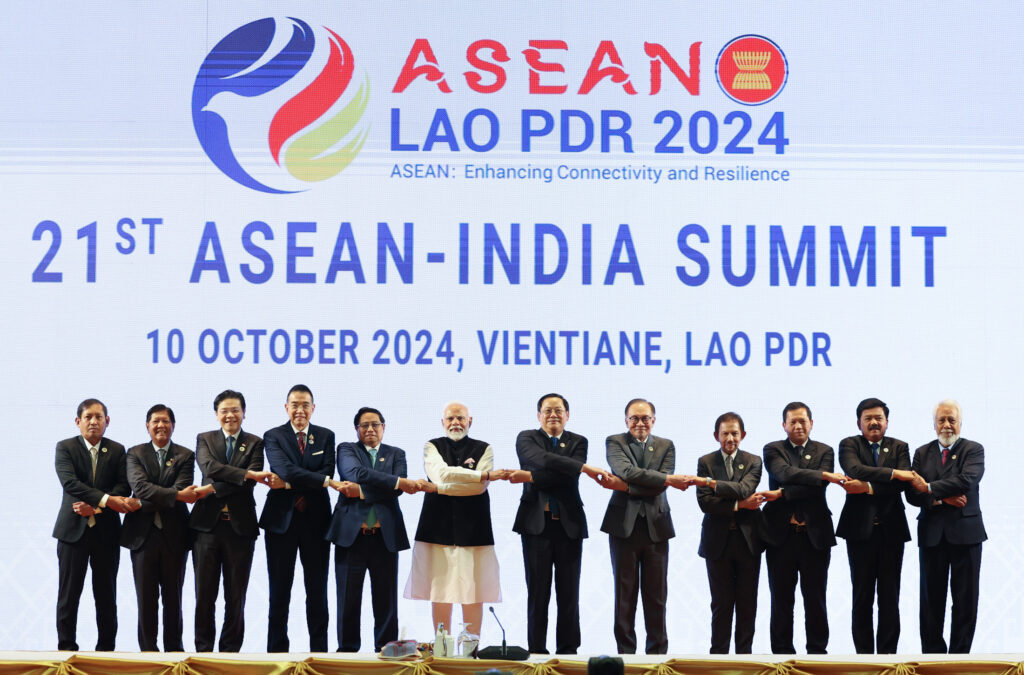
Since his first term in office, Modi has invested considerable effort in deepening ties with ASEAN countries
Presidents — Barack Obama, Donald Trump, and Joe Biden — and relations have continued to soar during the tenures of all these presidents. This has emerged as the most consequential global relationship for India in the
political, strategic, economic, commercial, and technology spheres. The two countries engage in 60 dialogue platforms, including critical and emergent technologies,
renewable energy, connectivity, education, health, agriculture, green hydrogen, defence, semiconductor chips and
many more. Prime Minister Modi was accorded the honour of being invited for a state visit by President Biden in June 2023, and also to address a joint session of the US Congress for the second time (the first occasion was during
India has displayed its strategic autonomy by not only not criticising Russia for its attack on Ukraine, notwithstanding the huge pressure from the West, but also continuing to import large quantities of oil and gas at concessional rates to provide affordable and reliable supply of energy to its people.
G20 Presidency
The successful conduct, both logistically and substantively, of India’s G20 presidency can be considered to be the pinnacle of Prime Minister Modi’s achievements over the past decade in the realm of foreign policy. No one had anticipated that India would succeed in crafting a consensual Leaders’
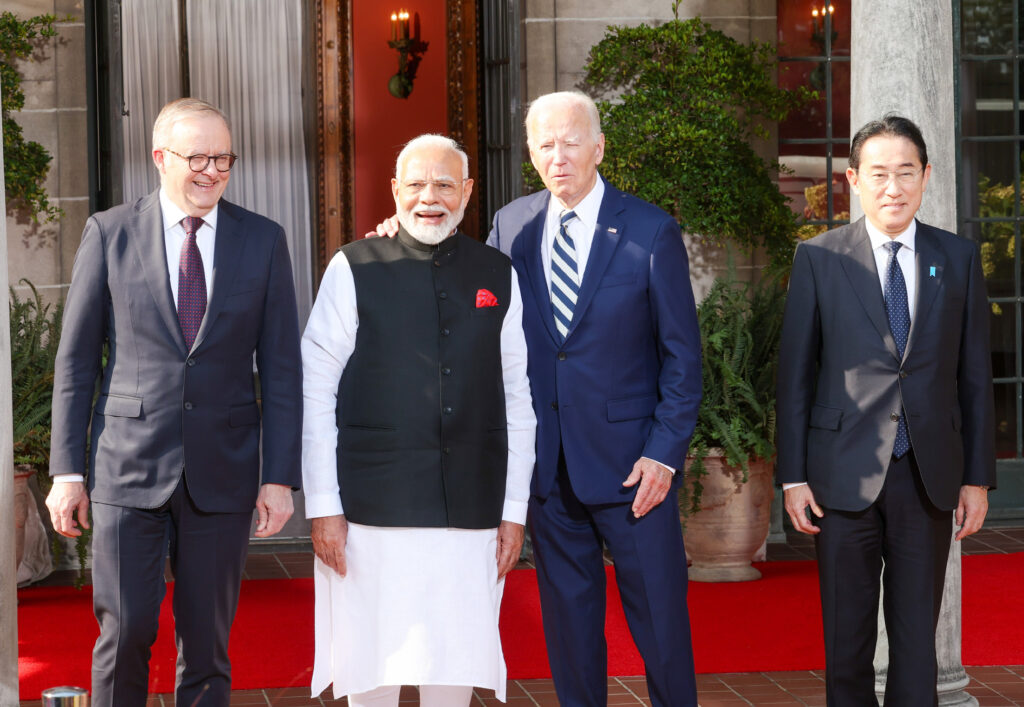
Under Modi, India-US ties have scaled new heights with the US considering India its trusted partner in the Indo-Pacific region
In addition to the far-reaching initiatives in
the political, economic and strategic arenas,
Prime Minister Modi has given a push to several cultural themes like yoga, etc.
Obama’s term in 2016). Prime Minister Modi has also been an active participant in the revival of the Quad group of countries in November 2017 and its upgradation to summit level over the past three and a half years.
However, the murder for hire accusations against
Vikash Yadav and Nikhil Gupta in an alleged plot to assassinate Khalistani extremist Gurpatwant Singh Pannun recently has cast a shadow over bilateral ties. It is, however, expected that both sides will deal with the issue maturely and not allow the burgeoning bilateral partnership to be impacted adversely by this development.
Declaration, given the widely divergent positions on the conflict in Ukraine between the West on one side, and Russia and China on the other. But India was able to achieve the unthinkable on the first day itself. Much of this success can be attributed to the leadership of Prime Minister Modi and the personal ties of respect and mutual benefit that he has been able to foster with most world leaders. India got the African Union inducted as the 21st member of the Group and emerged as a Voice of the Global South and a Vishwamitra (Friend of the World) as a consequence of the remarkable success of its G20 presidency.
In addition to the far-reaching initiatives in the political,
economic and strategic arenas, Prime Minister Modi has given a push to several cultural themes like yoga, Ayurveda, millets, International Solar Alliance, etc., to establish India’s
leadership in the cultural and spiritual domains. This has actively projected Bharat’s position as an ancient thought leader focusing on ‘Vasudhaiva Kutumbakam’ (The world is
one family) or the oneness of the global family
The Way Forward
With the reappointment of Dr Jaishankar as the External Affairs Minister after the election results in June 2024, Modi has clearly declared that the assertive and principled foreign policy of India will continue in his third term over
the next five years. In his brief remarks to the media after taking over as EAM, Dr Jaishankar stated that India’s foreign policy will be guided by the maxims of ‘Bharat First’ and ‘Vasudhaiva Kutumbakam’. This is a subtle assertion
that while India will continue to work steadfastly to promote its interests in the political, security, economic, technological and cultural spheres, it will also be equally mindful of its global responsibilities, particularly with respect to
observed, economic strength and growth have an important role to play in a vigorous and effective foreign policy. India should give priority to putting in place policies to increase its manufacturing, technology developing, promotion of social, physical and digital infrastructure, enhancing of exports, and so on.
Modi and his foreign policy team have
acquitted themselves highly creditably in
dealing with the wide-ranging challenges
that have arisen over the past 10 years
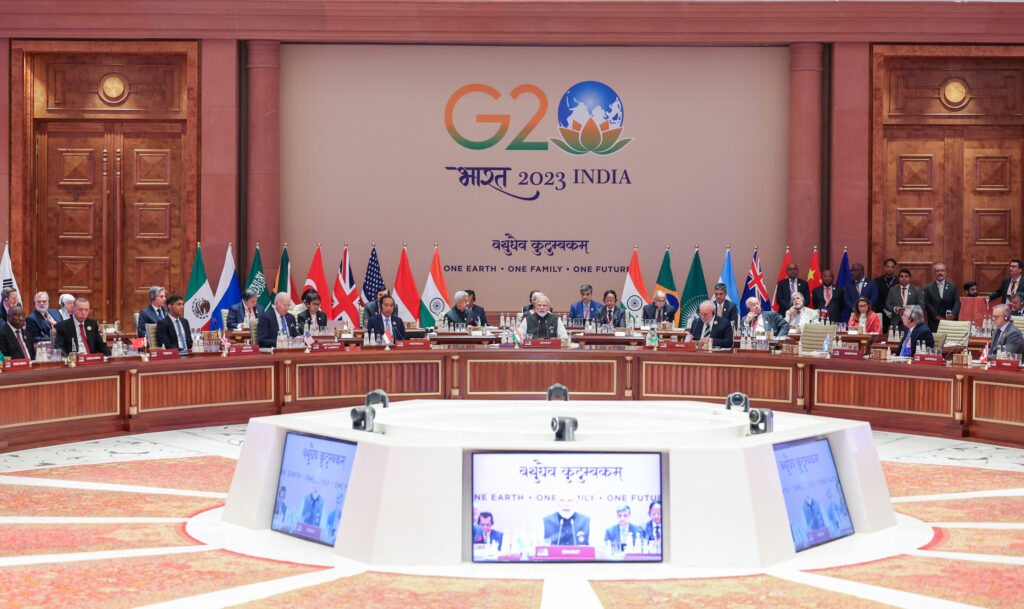
The G 20 Leaders’ Summit in Delhi in September 2023 was, perhaps, the crowning glory of India’s foreign policy under Modi
safeguarding and promoting the interests and concerns of
the Global South. Dr Jaishankar clearly stated that India is committed to advancing its role as a ‘Vishwabandhu’ by maintaining mutually beneficial and cordial relations with the world.
In addition to taking forward initiatives like the
IMEC (India-Middle East-Europe Economic Corridor),
I2U2 (India, Israel, UAE, US), IPEF (Indo-Pacific
Economic Framework for Prosperity), ICET (US-India
Initiative on Critical and Emergent Technology), etc. that India has partnered in recent years, it is imperative for New Delhi to double down on the pending negotiations on the FTAs (Free Trade Agreements) with the European
Union, the UK, the GCC (Gulf Cooperation Council) and other countries.
Expeditious resolution of the long-pending obstacles
in the completion of these agreements would send out a strong signal about India’s intent to become an active stakeholder in the global economic architecture. As has been
The coming months will also need to be utilised to arrange the Africa Forum, which is long overdue, as also the in-person India-Central Asia Summit which has become due this year. India’s ties with Africa as well as Central Asia
have suffered somewhat due to lack of attention over the past two years. But it is not a decline that cannot be arrested.
Modi and his foreign policy team have acquitted themselves highly creditably in dealing with the wide-ranging challenges that have arisen over the past 10 years. Today the world is in transition. The turmoil and turbulence present challenges as well as opportunities for India to enhance its standing and emerge as a more consequential and effective
global player in the years to come. India’s track record over the past ten years, particularly over the past five years, imbues the country with the hope and confidence that it
will be able to successfully confront the emerging challenges and take maximum advantage of the opportunities, to
advance India to occupy its rightful place in the comity of nations in the very near future.



Add Comment